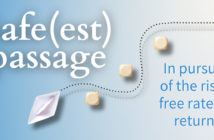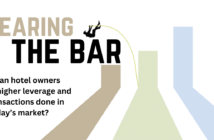by Rushi Shah
At the most basic level, creating value in commercial real estate relies on owners taking an asset that is underutilized and adapting it to its highest and best use. This outcome is determined by calculating the amount of cash flow the asset will be able to generate, and assessing the valuation the property can achieve after applying the cap rate that best matches the level of cash-flow risk.
Financing plays arguably the biggest role in how you craft a business plan for your asset, and your plan determines what financing you can obtain. For adaptive reuse projects, short-term bridge financing that allows time to execute your plan is the standard. Because your business plan hinges on projections for the property’s success after it is adapted, bridge lenders are focused on the property’s market and the sponsor’s proven ability to turn around an asset. Lenders must be confident that you and your projections will generate sufficient cash flow to cover the revenue and service the bridge debt they provide. Therefore, it is not a surprise that bridge loans are much easier to procure in high-demand markets such as New York or Chicago and harder to obtain in tertiary markets like Iowa or a small city in Alabama.
Adaptive reuse is a value-add strategy that applies to all asset classes but aligns especially well with hospitality due to a hotel property’s often high-demand locations, building structure, creative architecture, and sometimes, historical significance. Let’s take a look at a several ways to leverage these strategies in your portfolio and the related financing options.
#1: Adapt an office or retail asset to a hotel
This is a popular value-add strategy, especially in densely populated markets such as Miami, Los Angeles, New York, or Chicago. Developers buy existing buildings at below-replacement costs and convert them to a select-service or full-service hotel, all at costs lower than ground-up construction. These projects often leverage the existing unique architectural elements and include diversified revenue centers such as retail, a celebrity chef-led bar or a restaurant, or rooftop event space. New energy is breathed into the buildings and historical elements are preserved.
Because these projects require a high level of construction to change their use, lenders label them as needing a “heavy lift.” Lenders care because during construction, there is no in-place cash flow, and the ramp up will start from scratch and require extensive marketing. To mitigate this risk, lenders will require a contingency reserve over and above the budgeted renovation costs, as well as an interest reserve for the amount of time it will take for the asset to be cash-flow positive. An asset reaches this milestone after it is paying all of the expenses from the revenue and the debt service. To hedge against the added risks of the conversion and project delays, lenders also may ask the sponsor to put more skin in the game as equity. Financing is typically structured as a non-recourse bridge loan with a two – or three-year term and several one-year extension options. At the time of writing, interest rates ranged from 6 percent to 9 percent.
#2: Add a flag, re-flag horizontally or up-flag your hotel
This is one of the most common value-add strategies for hotel owners. In analyzing whether it is feasible to add a flag, change a flag, or upgrade a flag, it is extremely important to first look at the aspirational competitive set as defined by your STR report. This peer group is a set of properties that your future property will compete with AFTER you have successfully opened as the newly branded hotel. Consequently, developers should focus on the RevPAR for this comp set before devising any projections. A lender still will allow modest increases in RevPAR growth to accommodate for future inflation.
Developers also should identify the true operating costs of the rebranded asset. It is important to benchmark your projected Earnings Before Interest and Taxes (EBIT) or Net Operating Income (NOI) numbers to those of the market. For example, a typical limited-service hotel in an average market won’t produce more than 35 percent NOI as a percentage of revenues, while a full-service hotel under the same criteria will generate closer to 28 percent NOI. Sponsors that aren’t cognizant of these market metrics won’t be taken seriously by lenders. This demonstrates why it is important to talk to an experienced investment banker to validate your assumptions against real-market data before you start your financing search.
The type of brand you are adding or re-flagging to also impacts the financing. You want to choose a brand that gives you higher RevPAR penetration than what your existing asset has been able to provide.
#3: Convert a hotel into apartments, retail, parking or an alternative hospitality asset
Taking a look at the overall supply and demand in the market may reveal insights that can be leveraged in your value-creation plan.
For example, an owner of a 200-key full-service hotel in a tier 1 or 2 market may be able to increase future value by reducing the room counts to 100 keys and converting the remaining keys into 50 apartment units, along with converting lobby/event space into parking and retail.
These highly strategic projects require extensive planning and likely won’t show results for three to five years. They won’t be a quick hit with immediate gains. Lenders like these conversions because the capital markets value apartments and parking more aggressively than hotels, and the hospitality portion’s RevPAR is likely to increase due to less supply.
In addition, apartments and parking garner lower cap rates because they offer lower perceived risk. Retail cap rates are slightly higher in comparison but still lower than hospitality cap rates. This strategy is more viable for urban or convention-driven markets, as opposed to rural or transient ones.
Transactions are more complex, increasing the need for owners to rely on the experience of an expert intermediary to secure the right financing. Owners seeking favorable debt terms should plan conversions with the intention to help lenders. This means outlining project plans that do not disrupt in-place cash flows.
#4: Take advantage of cheap and “free” money
Value-add and adaptive re-use hotel projects also offer a great opportunity to utilize available government and tax incentives.
Programs such as Historic Tax Credits (HTC), newly rolled-out Opportunity Zone tax credits, New Markets Tax Credits (NMTC), Tax Increment Financing (TIF), Low-Income Housing Tax Credits (LIHTC), and local sales and property tax credits are widely available. The larger the project, usually the more lucrative it is for everyone (including the lender), and the lower the perceived risk because of easier execution.
As you can see, adaptive reuse and the right financing must go hand in hand to create value. Navigating the landscape can be onerous and it’s easy to take a wrong turn. Doing your homework, looking at your competitive set, and validating your plans and projections with an experienced intermediary early in the process will impact your eventual success.




